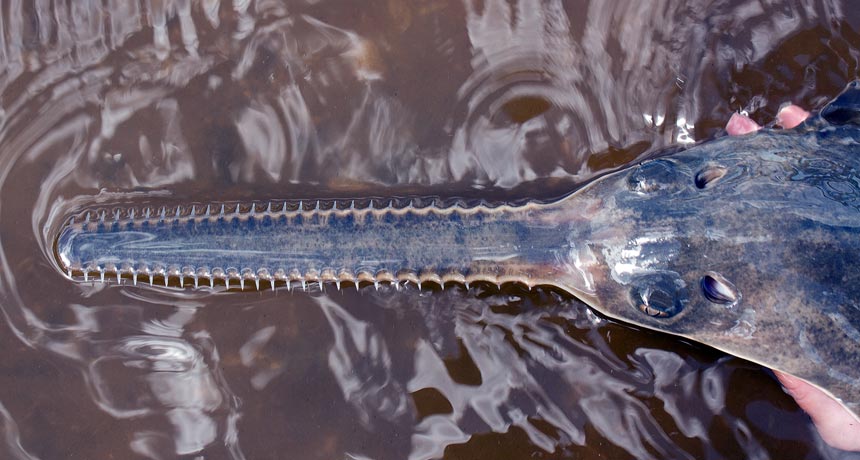‘Virgin births’ won’t save endangered sawfish

Sawfish numbers are dwindling worldwide. A new study finds a few of the fish in Florida have reproduced without males. But this won’t stave off the population’s decline for long, researchers say.
Florida Fish and Wildlife Conservation Commission
- More than 2 years ago
Fishermen don’t like sawfish. Species of sawfish, a type of ray, can get caught up in fishing gear and damage it. Sometimes, the fish accidentally hurt the fishermen. So it’s no surprise that fishermen who were unlucky enough to find a sawfish caught in their nets or lines often killed the fish before dumping their bodies back in the ocean.
The fish have also had to deal with the loss of much of the habitat in which juveniles grow up. And these threats have had consequences. Every species of sawfish is considered endangered or critically endangered. Of the two species of sawfish once found in U.S. waters, the largetooth sawfish hasn’t been seen in 50 years (it’s still found in other parts of the world). The smalltooth sawfish can still be found in waters off the tip of Florida, but studies indicate that its numbers have dropped by 95 percent or more.
A few female smalltooth sawfish have figured out how compensate for the low numbers, though, by reproducing without a male partner. Andrew Fields of Stony Brook University in New York and colleagues found evidence that female sawfish are capable of reproducing without sex. This is the first time that viable offspring of a wild vertebrate have been produced through parthenogenesis, the researchers report June 1 in Current Biology.
Parthenogenesis is common among many invertebrates, and scientists have documented cases of vertebrates (though no mammals) reproducing this way in captivity. But the vertebrate offspring frequently die or are stillborn.
Fields and colleagues were studying smalltooth sawfish in Florida. Between 2004 and 2013, they caught 190 fish in Florida waters. The researchers snipped a small piece of fin off each fish and analyzed its DNA to look for signs of inbreeding in the population. The fish were then tagged and released, and some were fitted with acoustic transmitters so the scientists could track them.
Offspring produced via parthenogenesis can be identified through DNA. Normally produced fish share DNA from mom and dad. Twins will have the same DNA profile. An animal created through parthenogensis, though, will have no dad DNA and half the genetic diversity of its mom, notes study coauthor Demian Chapman of Stony Brook University. And in their search for evidence of inbreeding, the researchers found something intriguing — about 3 percent of the fish had been produced via parthenogenesis.
Scientists don’t yet know how commonplace parthenogenesis is in the wild, but it may be more common in low-density populations where females have trouble finding mates, Chapman says. And it may help a species to stave off extinction for the short term. “But only females are produced, so it won’t work forever,” he says. The fish “still need sex for males.”






